Here’s just a small sample of some of our native plants that bees enjoy:
- Spring (this page)
- Summer woodies
- Summer herbaceous
- Fall including goldenrods, too!
Shrubs and trees

I love our pussy willow (Salix discolor) especially after the gray catkins flower (pictured). It’s a very popular spot with bees of all kinds looking for some early spring nectar and pollen. Bumble bee queens (the only individuals that overwinter) need that nectar and pollen to start their new colonies for the year.
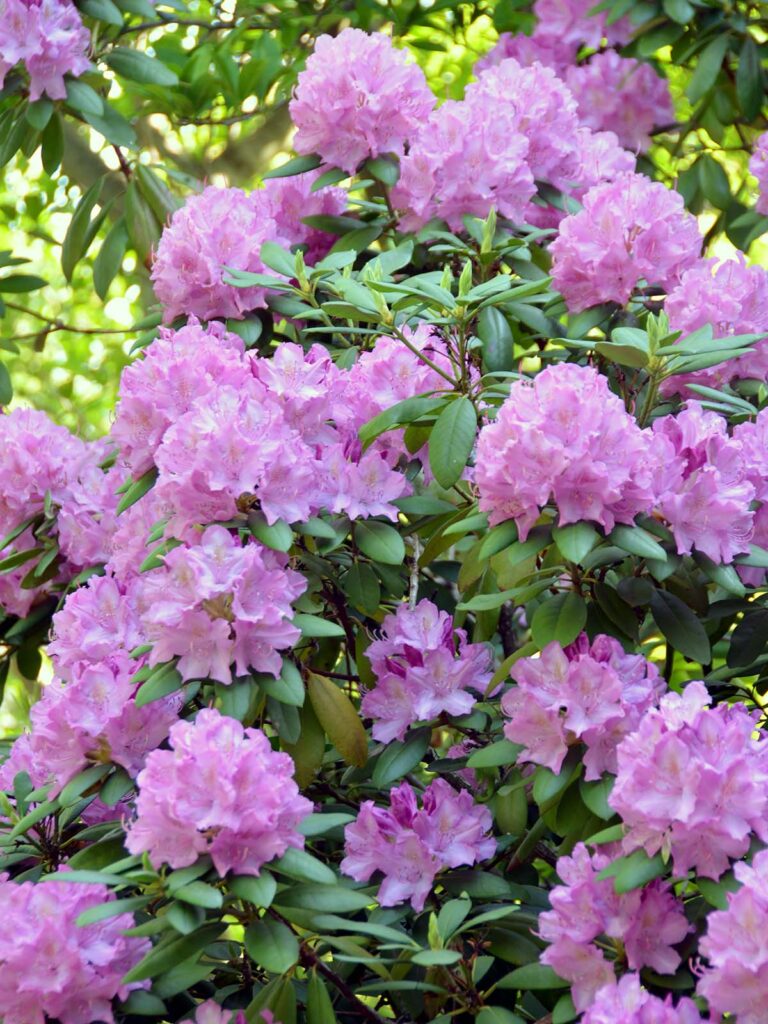
We were surprised to see how many other shrubs and vines provide food for bees, especially in the spring, such as these rhododendrons.
We just naturally associated bees with wildflowers, but these native shrubs, which we originally grew to provide berries, also have nectar-rich flowers in the spring.
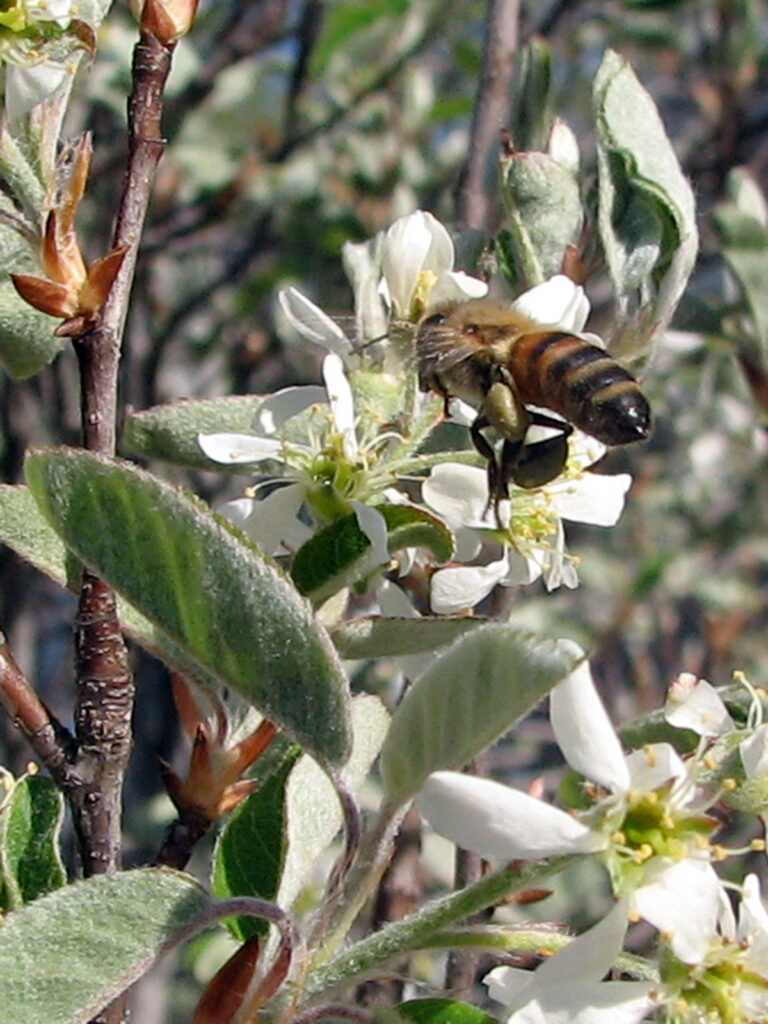
I saw this bee on one of our serviceberries (Amelanchier canadensis) soon after I heard about Colony Collapse Disorder. I was relieved to see there were at least some bees left to pollinate our vegetable garden as well as the shrubs, such as this serviceberry, that we planted to produce berries for birds. Later, I learned that native bees are even more important than are the non-native honey bees.
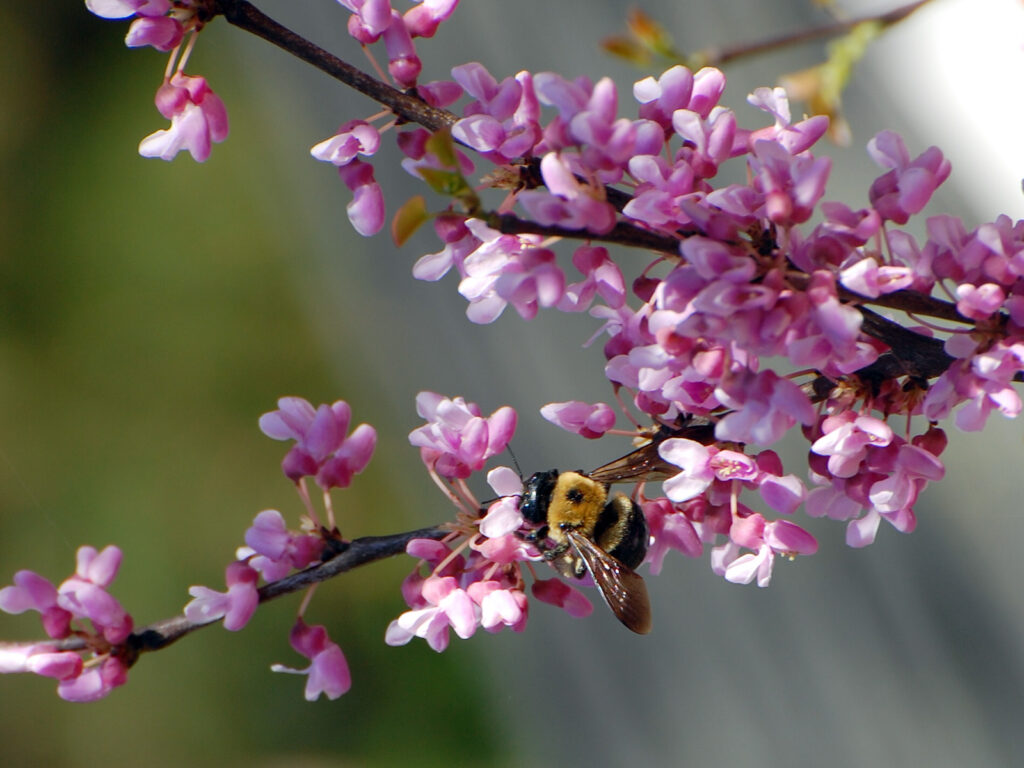
We have a few redbuds (Cercis canadensis), truly native a bit farther south. They’re beautiful in the spring and also provide a good early source of nectar.
Other than that, though, it’s not a very productive tree in terms of hosting lepidoptera and thus caterpillars. When it reaches the end of its life span, we’ll choose a better tree.
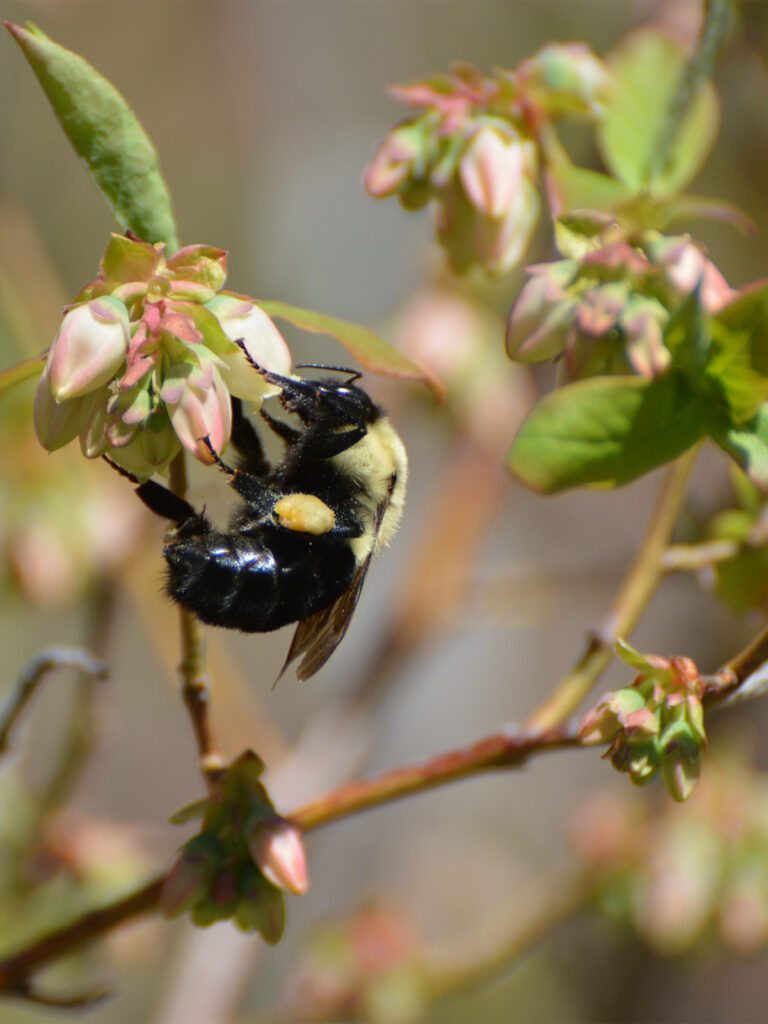
Our blueberries benefit both the bees in spring and us in summer.
We depend on them to pollinate our six plants, and we’re happy to return the favor as they get nectar and pollen for their new nest.
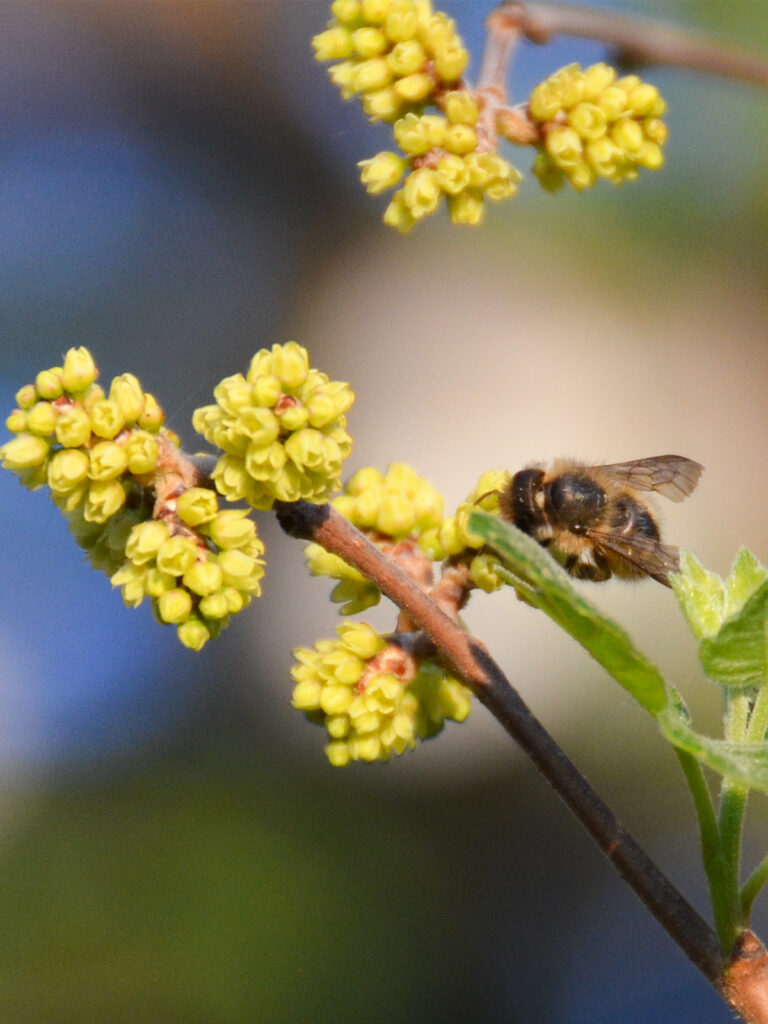
Another plant that produced bee food in spring is fragrant sumac (Rhus aromatica).
This one used to be in the sun and had flowers and then berries, but as other trees matured around it, our plant is now in the shade and no longer produces flowers.
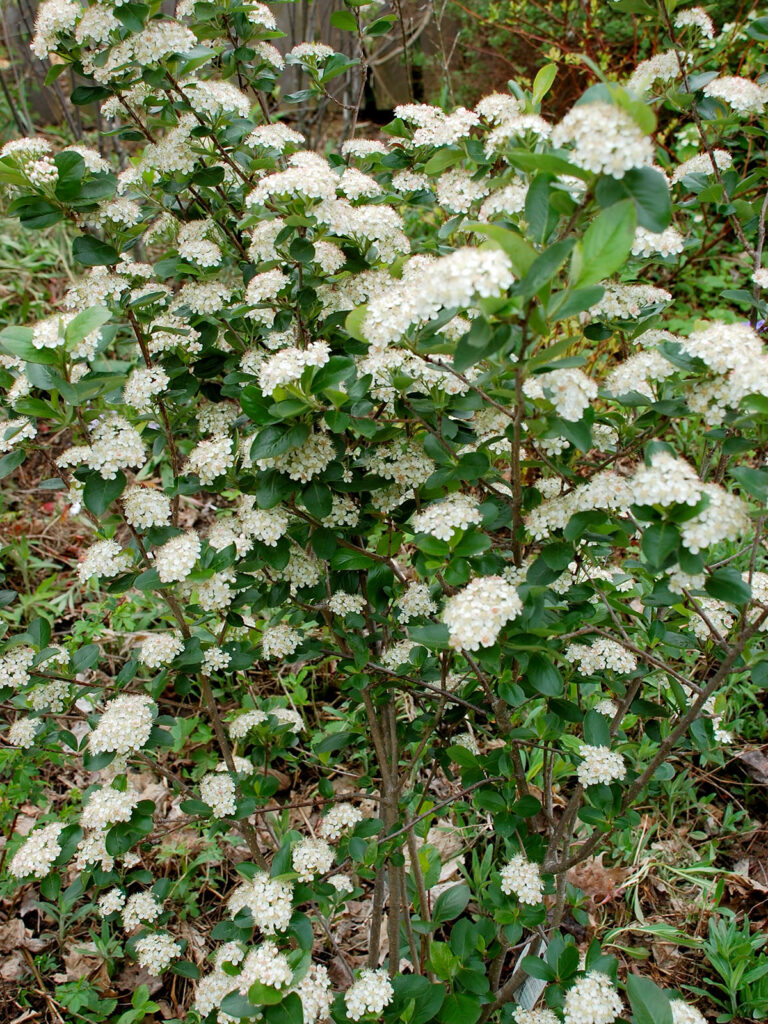
We get used to thinking about bees needing flowers and think herbaceous plants. But many shrubs have flowers important to bees, and many of these bloom in the spring, such as this chokeberry and the many species of dogwoods.

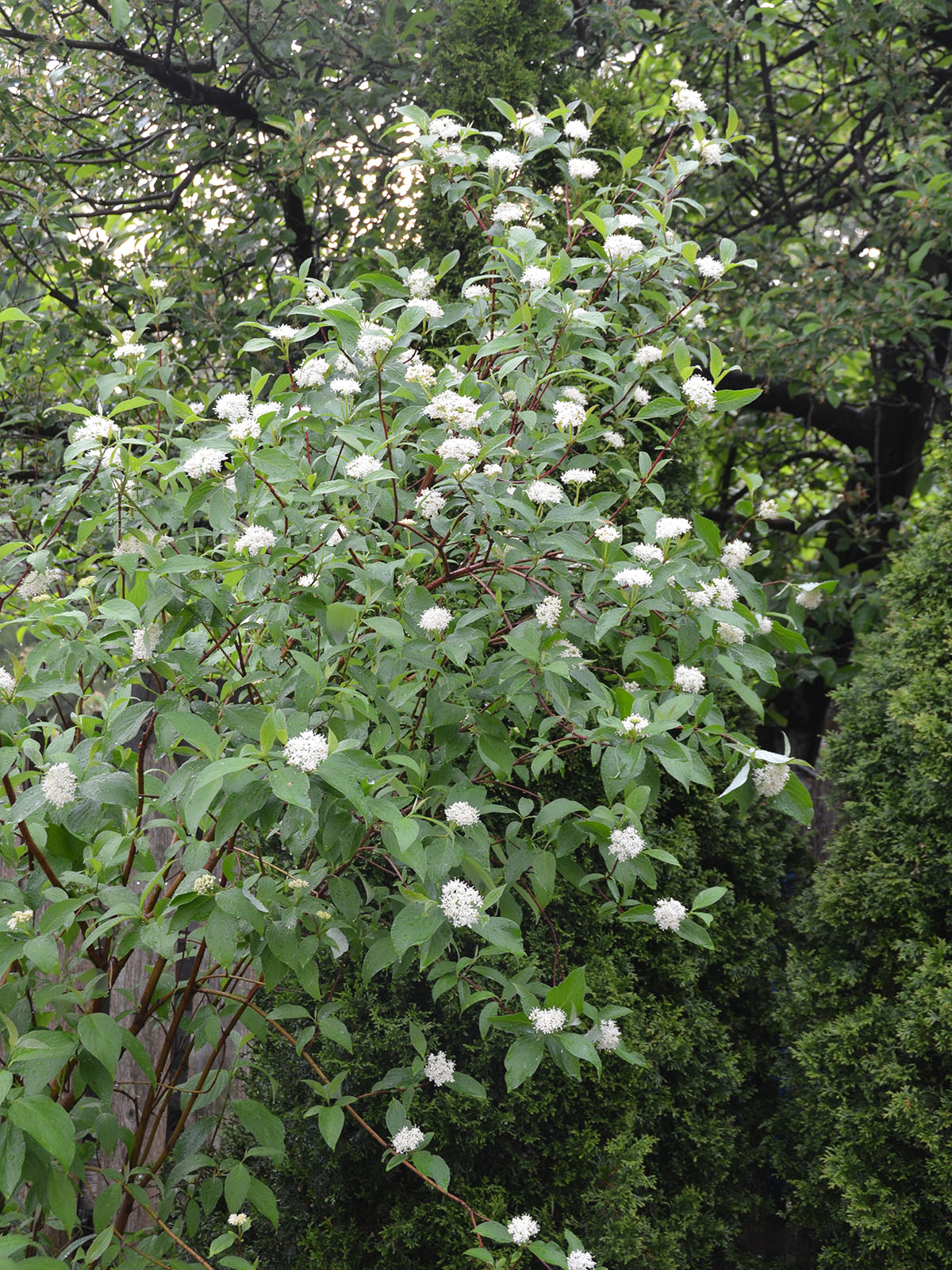
Vines
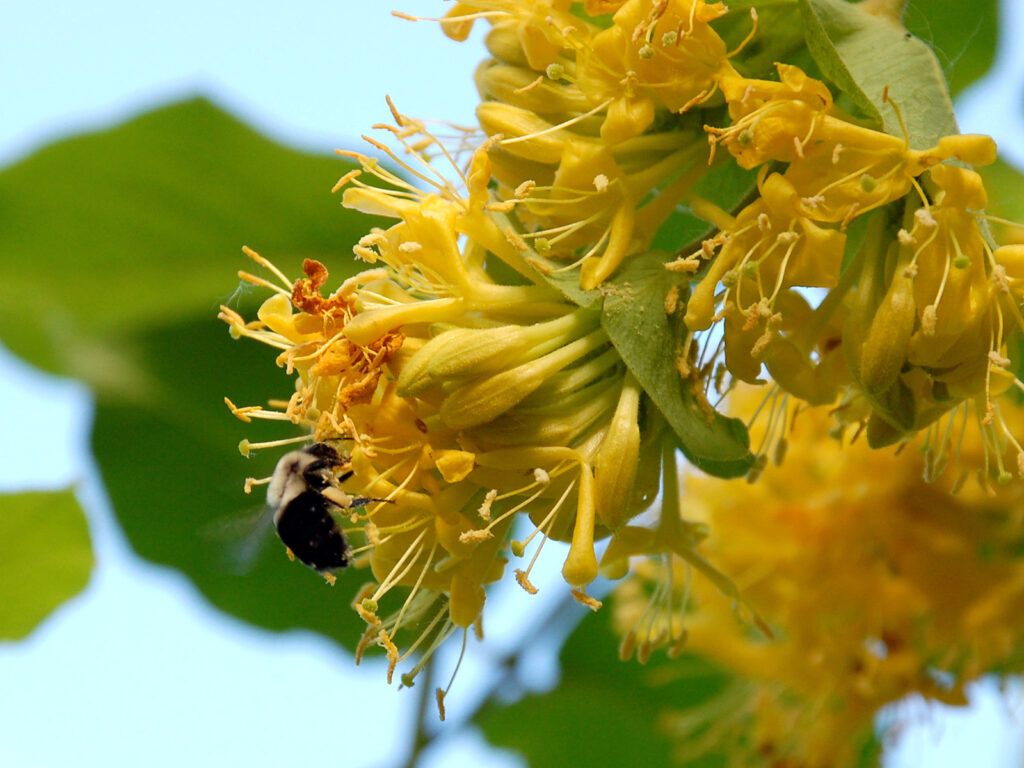
I love this hairy honeysuckle vine (Lonicera hirsuta) for its buttery-yellow flowers and its hairy leaves.
The bees love it for its nectar.
Herbaceous plants
There aren’t as many herbaceous flowers blooming in the spring as there are flowers on shrubs, but the ones that do bloom are gorgeous, and even more enjoyable since we know they’re fleeting, that is, ephemeral.
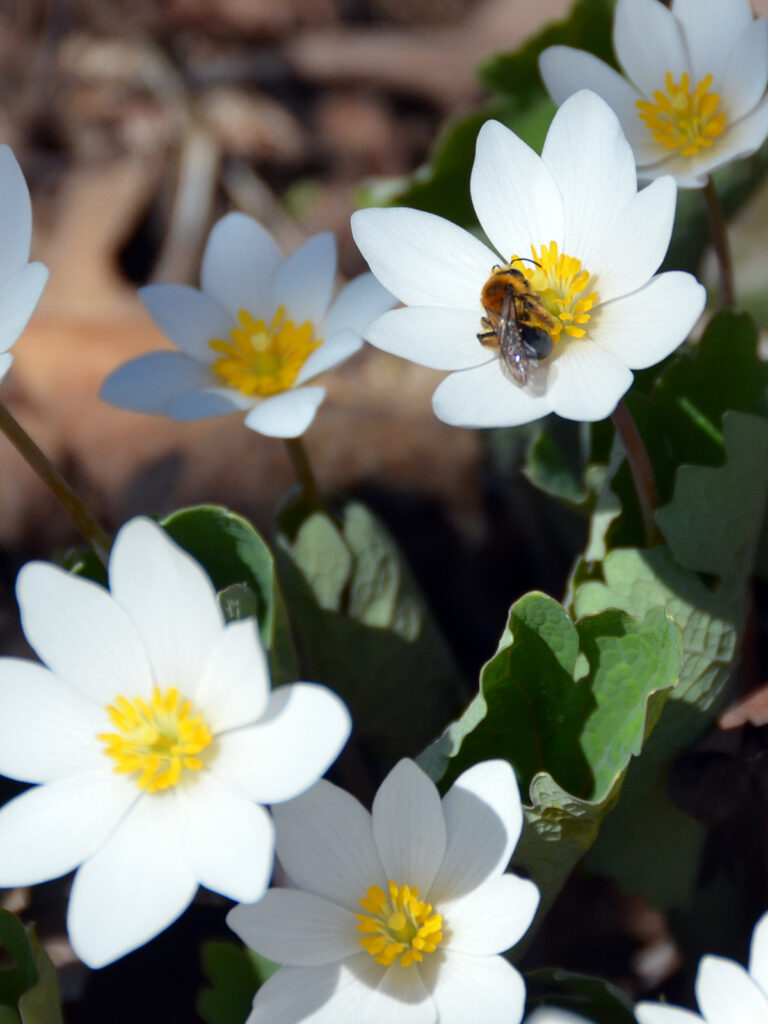
One of the beautiful spring ephemerals is bloodroot (Sanguinaria canadensis). This small bee appreciated its nectar, too.
Shown below are some other spring flowers such as Virginia bluebells (Mertensia virginica), mayapple (Podophyllum peltatum), goldenseal (Hydrastis canadensis), various trilliums, and others. After starting with one of each type, now we have quite a nice collection of these natives that are so welcome after a long Central New York winter.
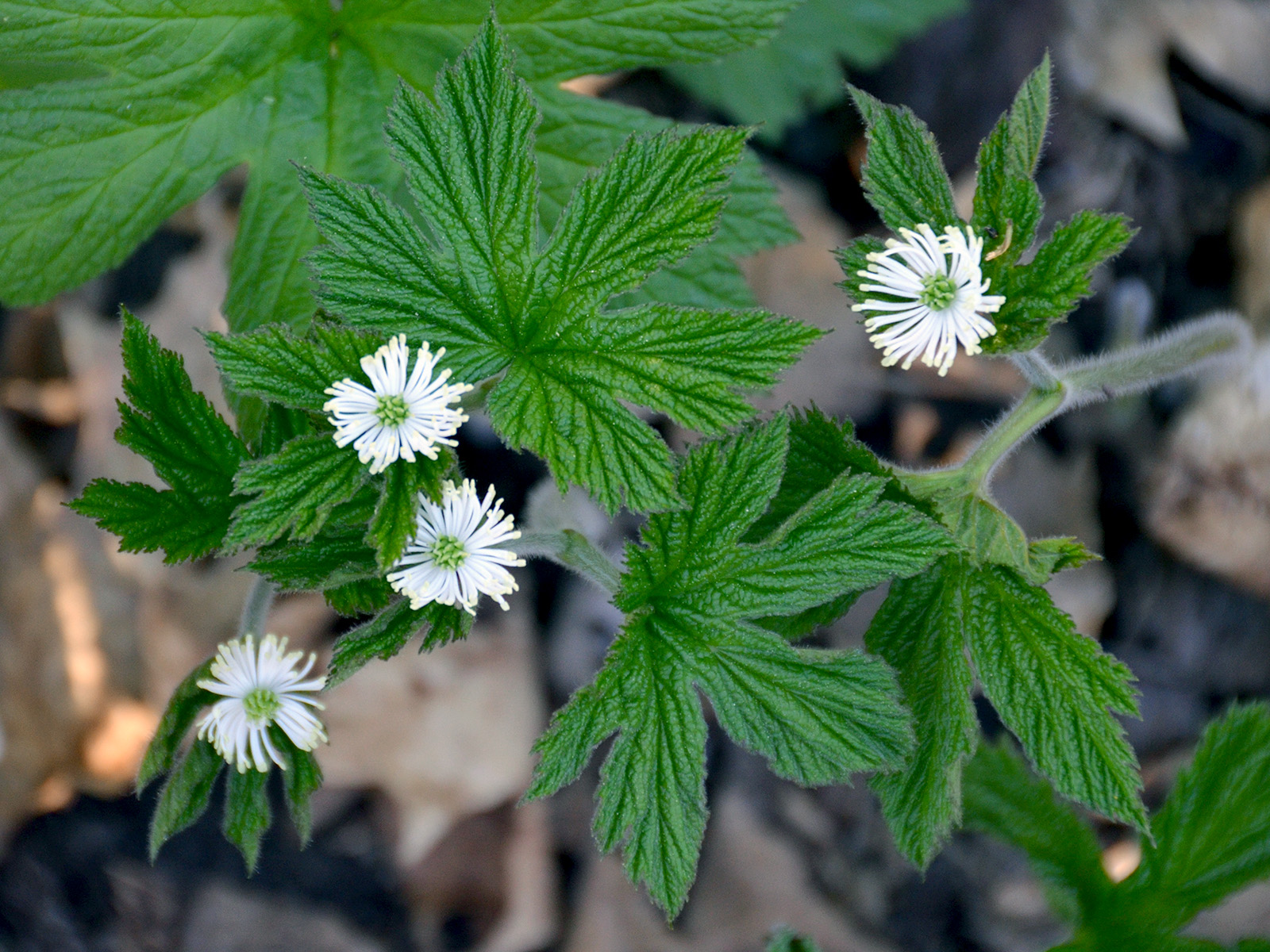
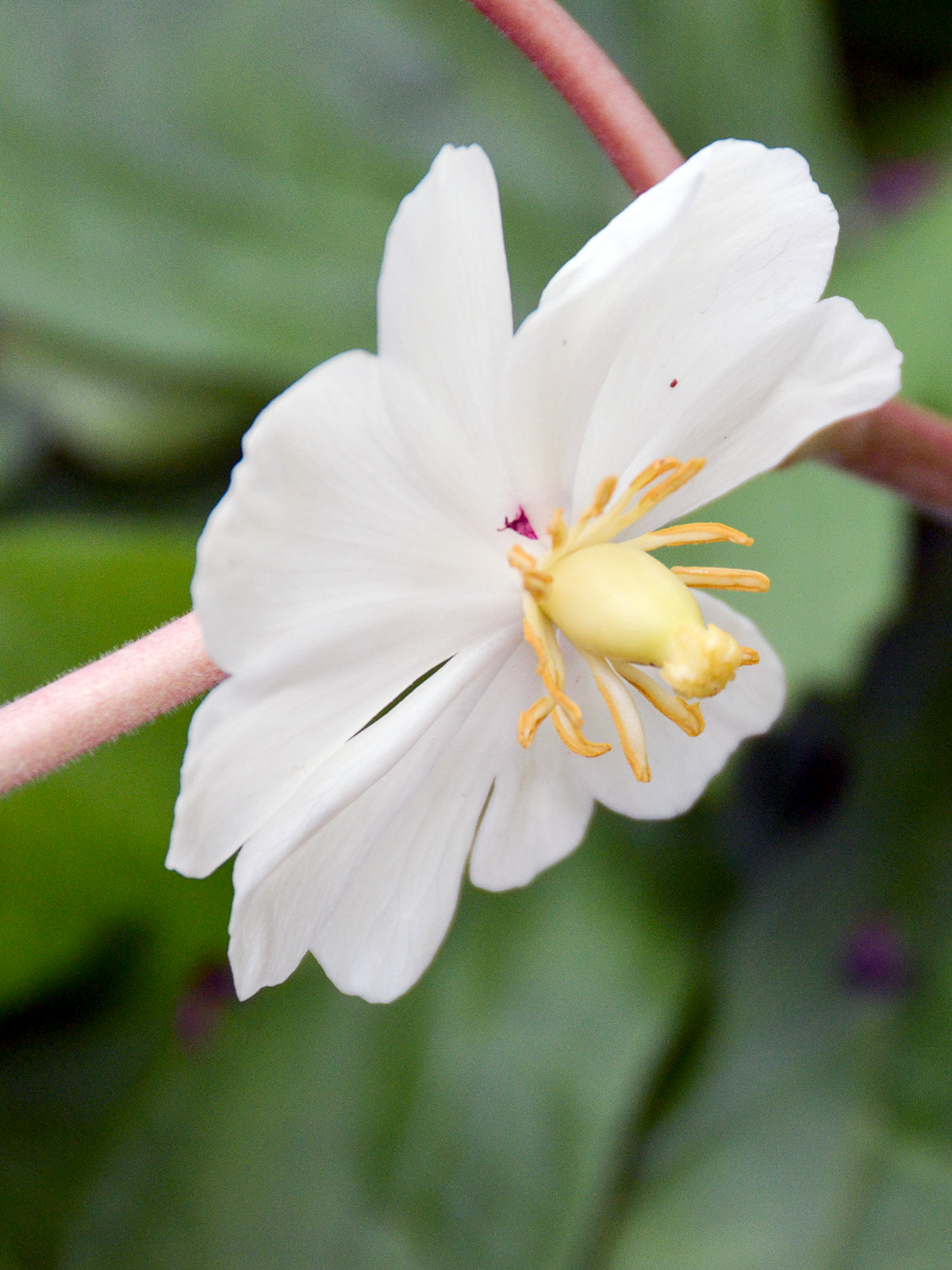
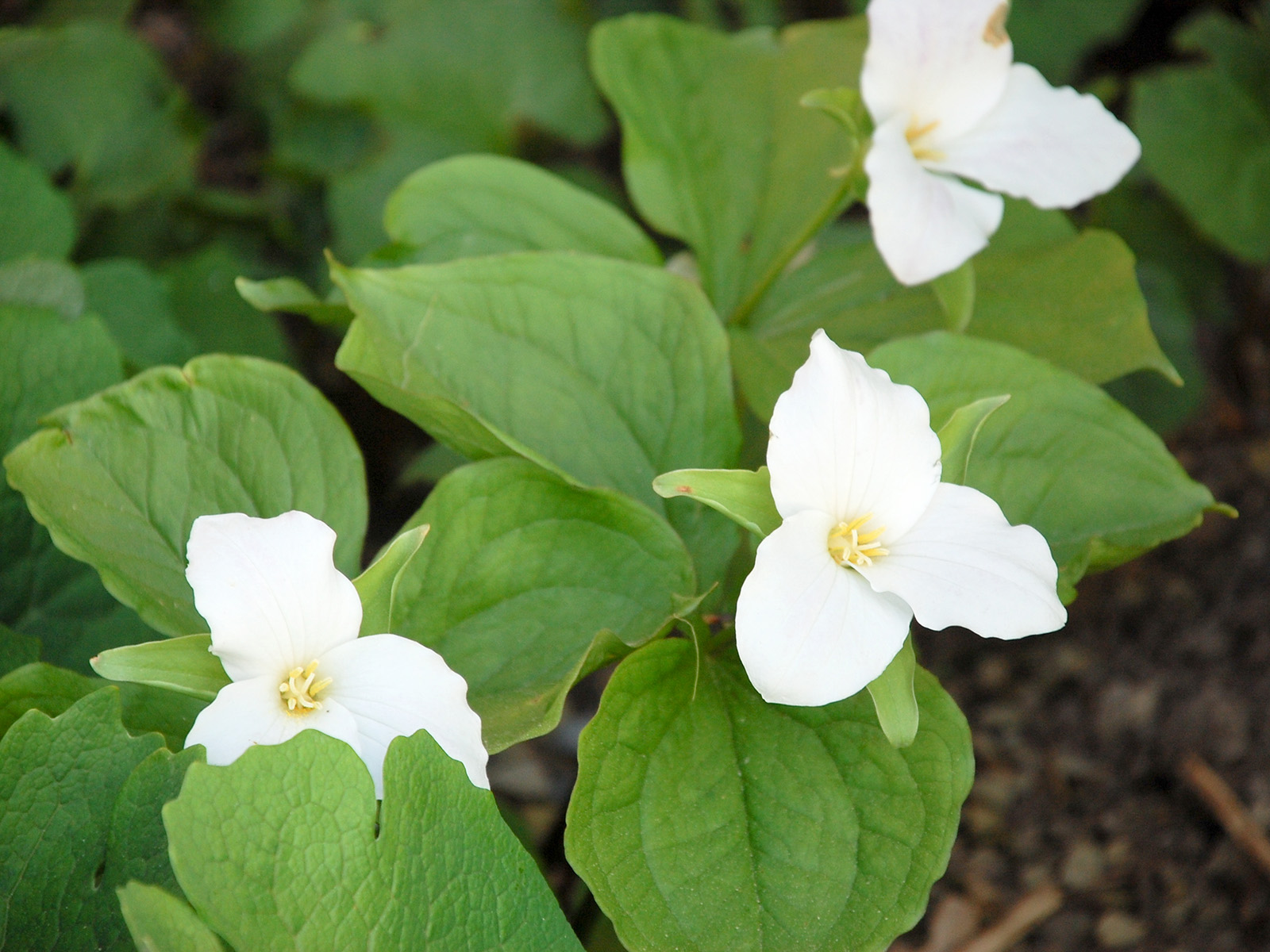
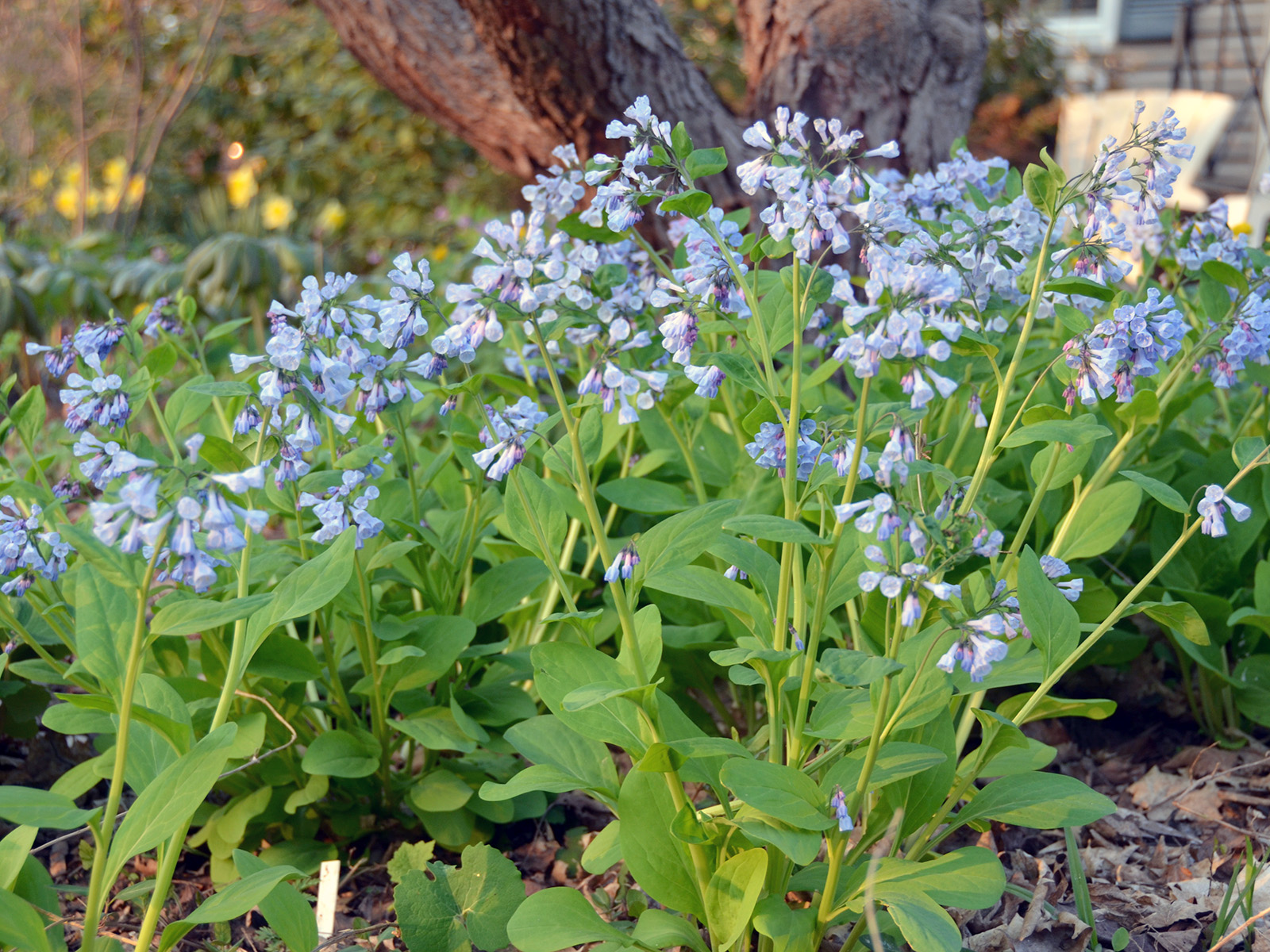
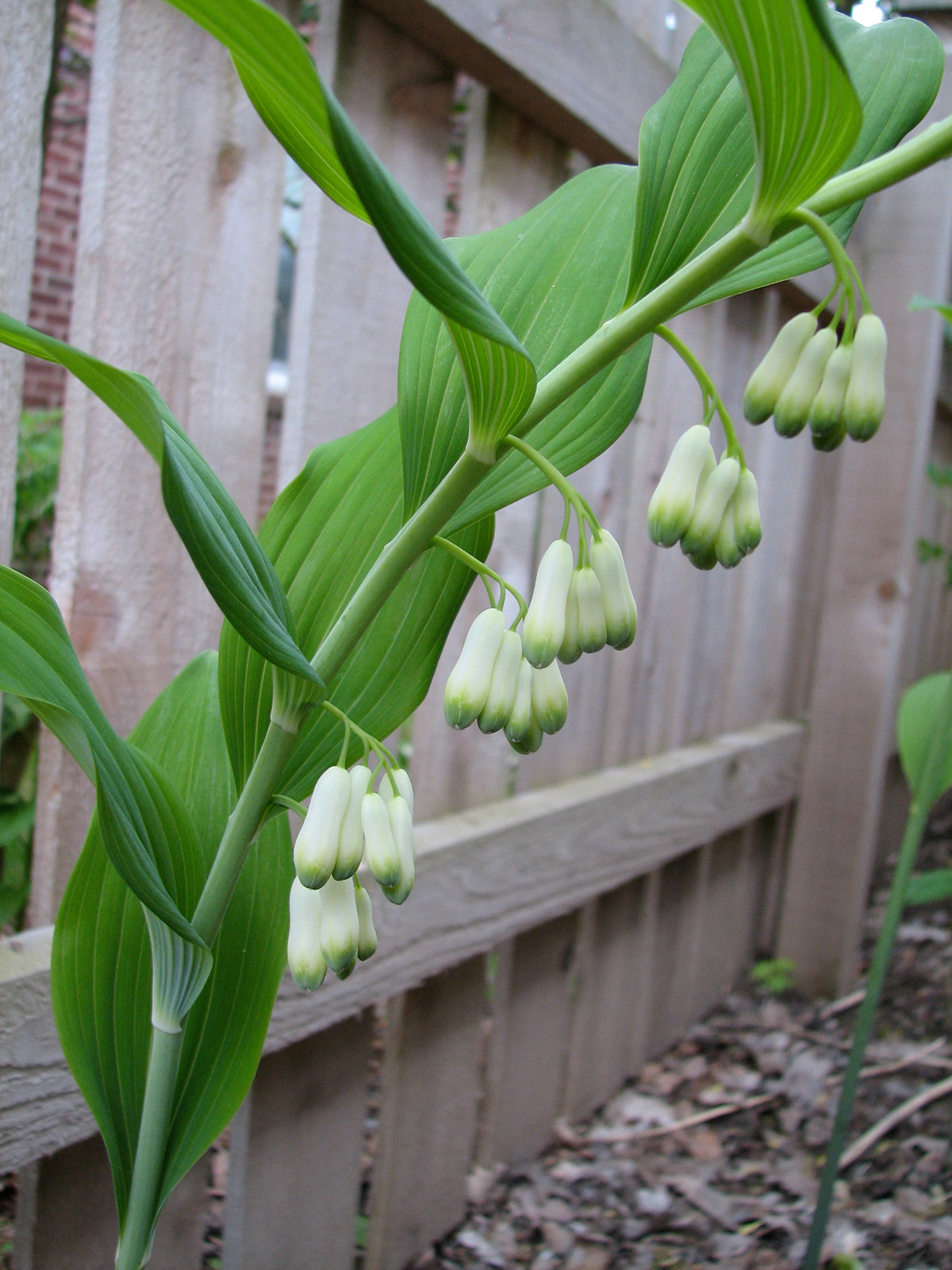
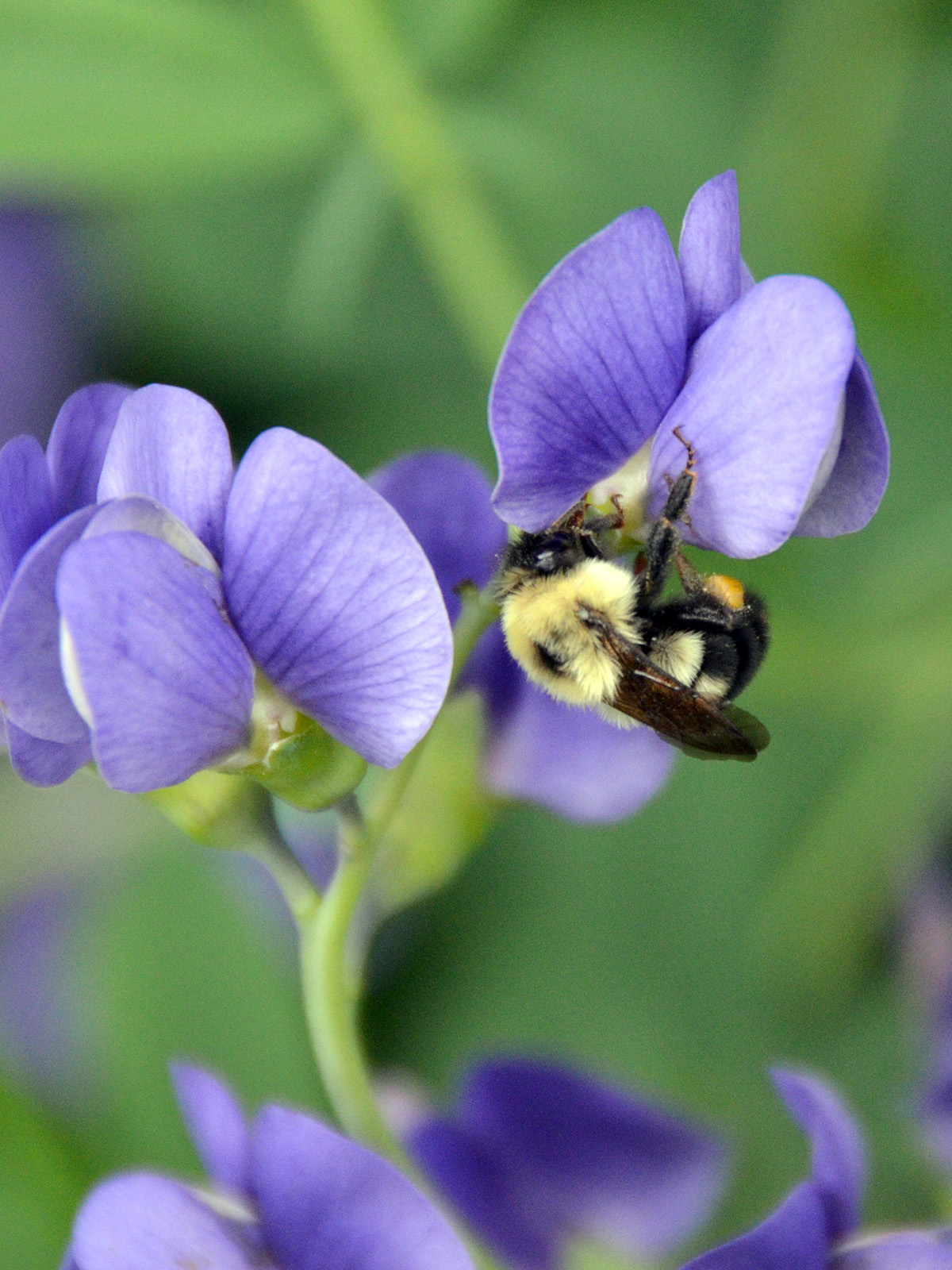
Resources
- Univ. of Illinois:
Reflections
Flower nectar has only one known function, to attract and reward pollinators, most of whom are insects. It would probably not be an exaggeration to say that almost any insect that can fly, crawl, hop, or flop to a flower would do so if it could. However, the only insects that have developed a total, irrevocable, and absolute dependence on nectar (which they modify into honey) are the honey bees, of which there are several species native to the Old World. Even bumble bees primarily do not use nectar to feed their young: they use pollen.
~ , Insects and Gardens: In Pursuit of a Garden Ecology, p. 168
We’ve put all our eggs in the honey bee basket. We need more baskets.
~ , The Xerces Society
This is not someone else’s problem. We — you and I and everyone who has a yard of any size — own a big chunk of this country. Suburban development has wrought habitat destruction on a grand scale. As these tracts expand, they increasingly squeeze the remaining natural ecosystems, fragment them, sever corridors by which plants and animals might refill the voids we have created. To reverse this process — to reconnect as many plant and animal species as we can to rebuild intelligent suburban ecosystems — requires a new kind of garden, new techniques of gardening, and, I emphasize, a new kind of gardener.
~ , Noah’s Garden: Restoring the Ecology of Our Own Back Yards, p. 16, 1993
